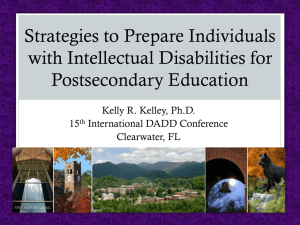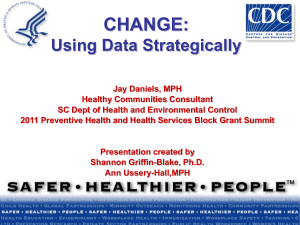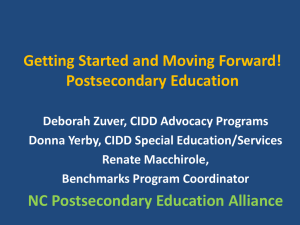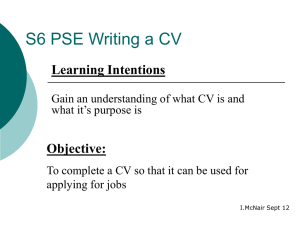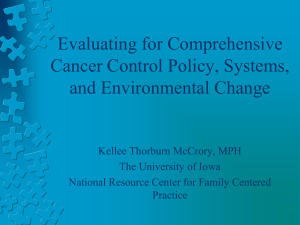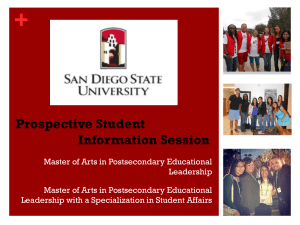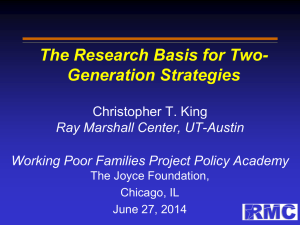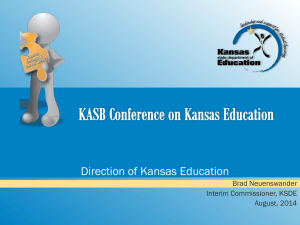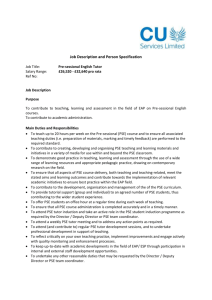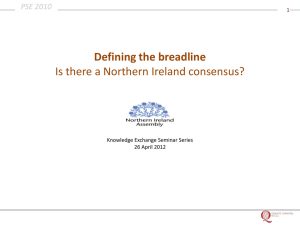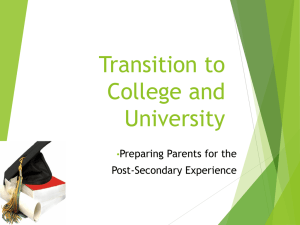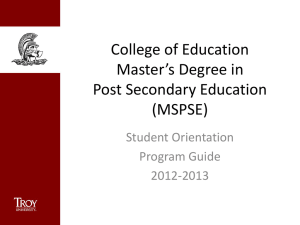PPT Slides
advertisement
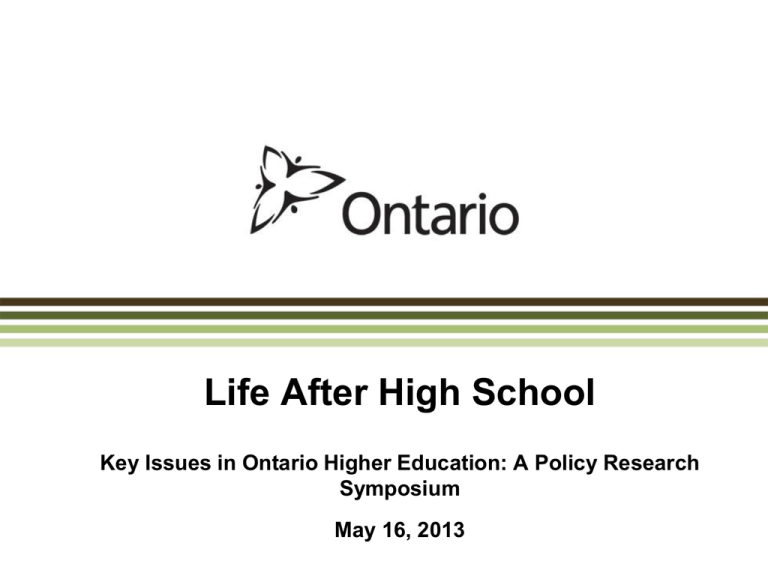
Life After High School Key Issues in Ontario Higher Education: A Policy Research Symposium May 16, 2013 Overview What Is Life After High School? 2 – Pilot project that began in participating high schools in Fall 2011 – Piloted in 87 high schools with low rates of transition to postsecondary education (PSE) – 7,500 Grade 12 students received an education program that: • provided information on labour market opportunities and the economic benefits of postsecondary education, choices, and costs • guided students through the PSE and OSAP application processes Overview (cont’d) Why Do We Need LAHS? – Supports the government’s commitment to increase the PSE attainment rate to 70% – Explores ways to increase rate of transition to PSE in Ontario by removing barriers to participation in Grade 12 – Removes financial barriers to transition by covering application fees for students who may not otherwise attend college or university Who is Conducting the Work? 3 – Social Research and Demonstration Corporation (SRDC www.srdc.org) and Dr. Philip Oreopoulos (U of T) – Ran a similar project in British Columbia Overview (cont’d) How Will We Know If It Worked? – – SRDC will analyse: • Data and compare changes in PSE applications and enrolment at subject and control schools to determine the effectiveness of the program • Implementation successes and challenges to assist with the design of future programming Preliminary results are encouraging • 4 Final results (anonymous with respect to the schools) will be available in 2015 Program Design In-class facilitated workshops through three 70-minute sessions Workshop # 1 (October to November): – – – – A multi-media presentation of labour market benefits and costs of PSE Information about the distinctions between college, university and other postsecondary options Students searching and selecting from programs available at Ontario colleges and universities Automated provision of an estimate of students' costs and available financial aid Workshop # 2 (November to December): – – Guidance through the college and university application process Payment of either the OCAS or OUAC fees Workshop # 3 (May to June): – 5 Guidance through the 2012-13 OSAP application process Video Presentation • • 6 At the moment, we are showing a video which introduced students to the Life After High School project. However, due to licensing limitations, we cannot publicly broadcast this video. Stay tuned…we will return in less than 3 minutes. Feedback from Participating Schools – 7 SRDC conducted survey of educators at subject schools following the conclusion of the program: • “There are many situations where a student could not afford to apply to postsecondary and LAHS made ALL the difference!” • “LAHS kick-started kids into thinking about postsecondary options and created more ‘buzz’ about PSE than in previous years; created an exciting atmosphere around postsecondary options; students researched and asked relevant questions about PSE; everyone knew what LAHS was about…” • “LAHS reduced students and parents anxiety about applying to PSE and OSAP…” • “Record number of students applying and being accepted into PSE institutions…” • “I just had a Grade 12 student walk up to me in the halls and say: Guess what? I just got accepted by Fleming College! There was a big package in the mail and my Mom told me to open it last night. I asked (him) if you didn’t participate in the LAHS Program would you have applied to college? (He) answered, probably not.” Success to Date Postsecondary Applications • A 40% impact in combined university and college applications at these historically low-PSE transition schools At Program Schools • • College applications increased over 2011 - from 18.5% to 29.8% University applications increased over 2011 - from 19.9% to 24.6% At Control Schools • • College applications remained relatively stable over 2011 - at 20.0% University applications increased slightly over 2011 - from 20.3% to 20.8% Postsecondary Enrolment • 8 Detailed analysis to be completed over the coming weeks; initial preliminary findings look promising, with a greater impact at the college level What’s Next 9 – The Government is building on the momentum of this initial success and has engaged SRDC to conduct a second phase of the project – Through Phase II, the Ministry will explore economical and efficient models to potentially deliver the education program across the province Life After High School – Phase II – Phase II builds on the initial success of LAHS by: • • • – LAHS Phase II will be offered to: • • 10 Engaging with education partners and high schools that participated in the first phase Developing two or more models for potential province-wide roll-out Delivering a model to participating schools starting in Fall 2013-14 Grade 12 students at 30 low-postsecondary transition high schools in Ontario Youth supported by the Ontario Children’s Aid Societies – The program will be modified to measure the impact of the application fee payment by providing fee payments to only 21 of the program schools – Preliminary results of Phase II will be ready at about the same time as the final results from the original LAHS study Questions? Comments? 11
